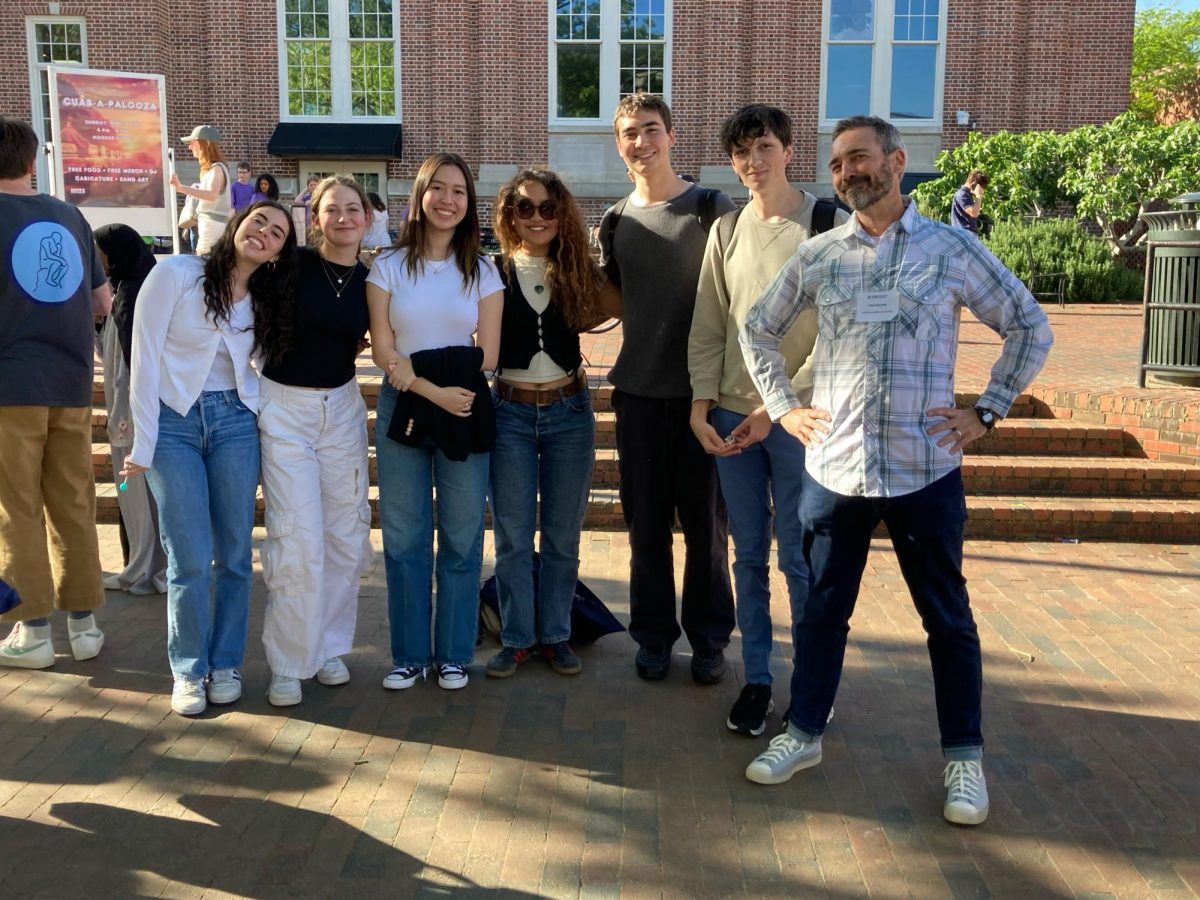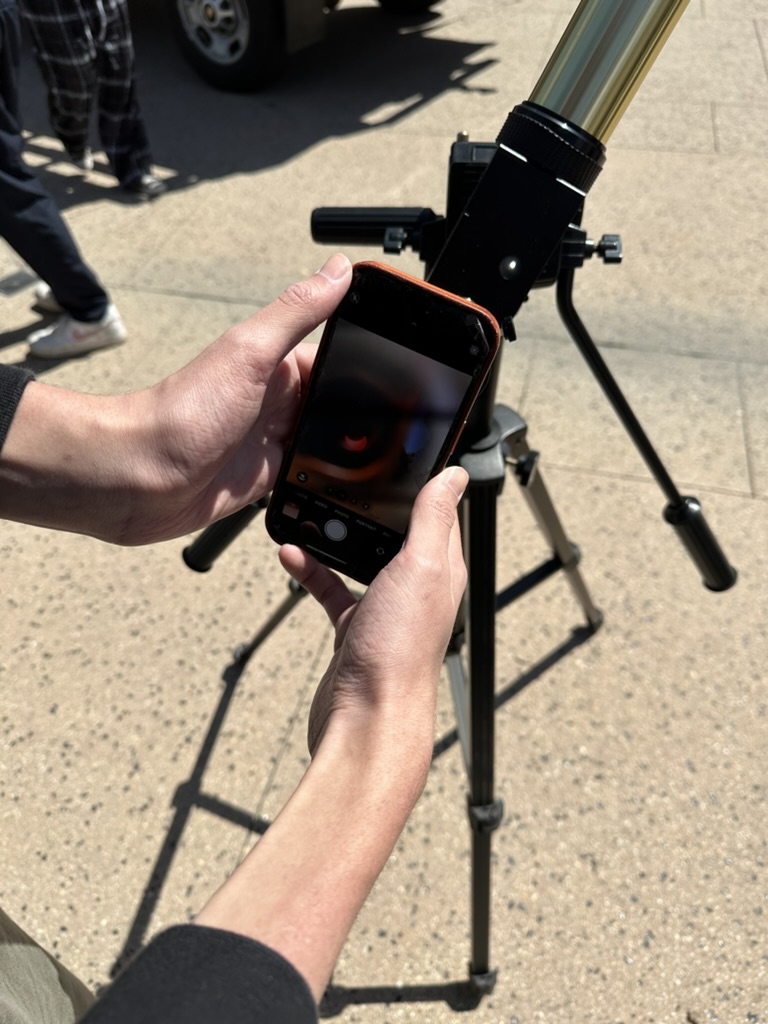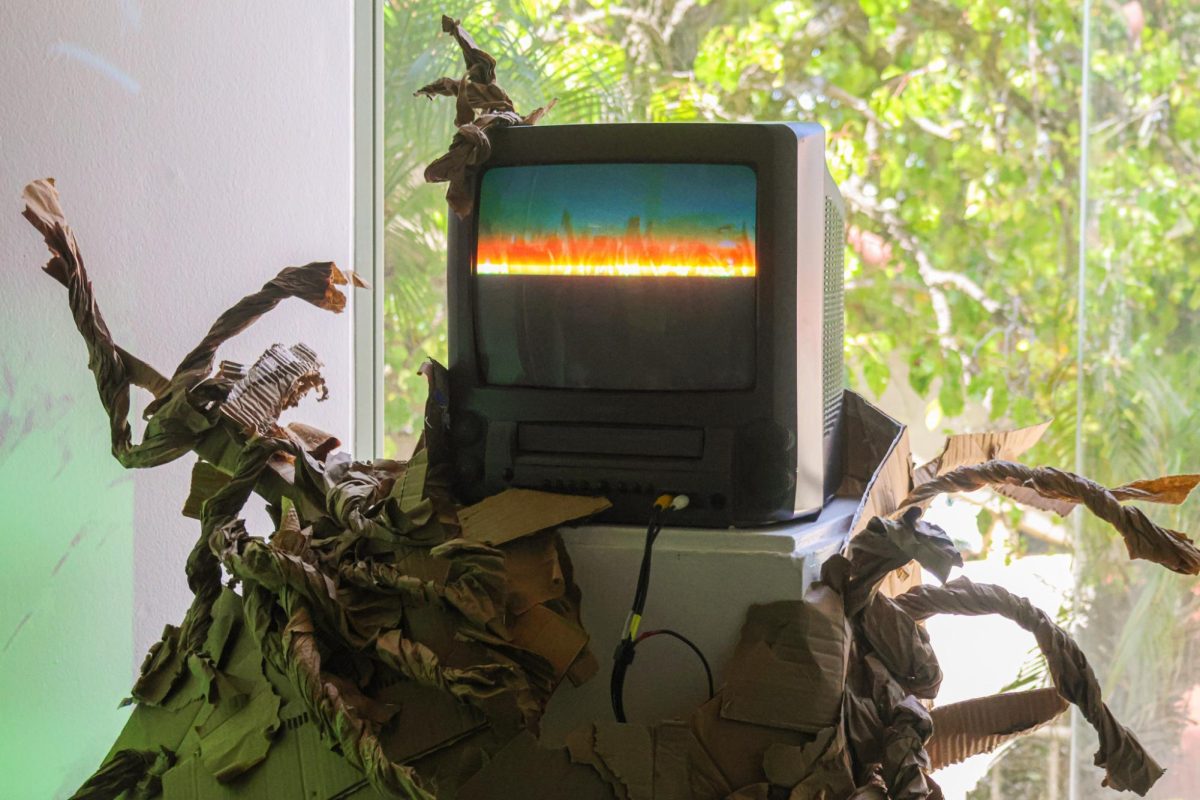By Alexia Boyarsky
Chalmers 202 generates several different reactions from passers-by. Some stop and stare in interest at what looks like a mix between a carpenterâs shop and a used electronic shop. Others hurry by without understanding what is happening. But for the students of science teacher Antonio Nassarâs Studies in Scientific Research class itâs a place to come for 45 minutes a day and experiment.
Second period Thursday sees a flurry of action throughout the room. In one corner, a deep echoing gong produced by an “acoustic laser” is controlled by Nassar.
Down the table from him, Eric Arzoian â09 places duct tape over a long metal tube with holes punctured on to the top. Assisted by Jason Mow â09, he starts the gas pumping into the tube from one side and hooks up a speaker to the other end. After checking that gas fills the tube, Mow rips off the duct tape, and Arzoian walks behind him with a striker.
Once a fire starts from one of the holes, it quickly spreads to come out of all of the holes. Arzoian turns on the speaker and a single deep note is played. To correspond with the sound wave, the small flames go up or down depending on where on the sound wave they are located.
“We tried this experiment with music and the flames danced with the music,” Arzoian said. “Itâs a cool experiment and it visualizes the sound waves,” he said.
Meanwhile, in the far corner from Arzoianâs dancing flames and Nassarâs acoustic speaker, Ian Cinnamon â10 experiments with what happens when different metals are heated in the microwave.
As he places a crumpled piece of aluminum foil into the microwave and clicks the button, sparks explode from within and a burning smell wafts out into the room. A few seconds later, the metal is reduced to a small sparking black pile.
In his experiment, Cinnamon studies why thick metal, like lead, heats up more in different parts of the metal. There are hot spots and cold spots, and using heat sensitive paper they can understand why they heat up where they do, he said.
The room itself seems to revolve around a low set black leather couch that stands along one side. Students loaf on to it and discuss everything from college decisions to the current lunch menu and, occasionally, their class projects.
Students in the class are allowed to choose their own projects at the beginning of the year based on something they are interested in or a list of potential projects compiled by Nassar, he said. Other projects being explored this year are bio-fuel, an eco-friendly car and how sounds waves affect cars.
The funding for the class comes in part from the science departmentâs budget, from school endowment and, for specific projects, from outside funding.
“It really doesnât cost obscene amounts of money,” Nassar said. “We reuse a lot of things, we donât really waste materials, we shop on eBay and a lot of the things we use are also used in regular science classes.”
The format of the class is designed specifically to simulate real life research, Nassar said. Students must wait for materials to arrive, they have to design their own experiments and are for the most part left to work on everything on their own, with help from their peers and from Nassar.
“There really are no rules in this class, nothing is out of bounds,” Nassar said. “I think of it as a scientific playground.”




































